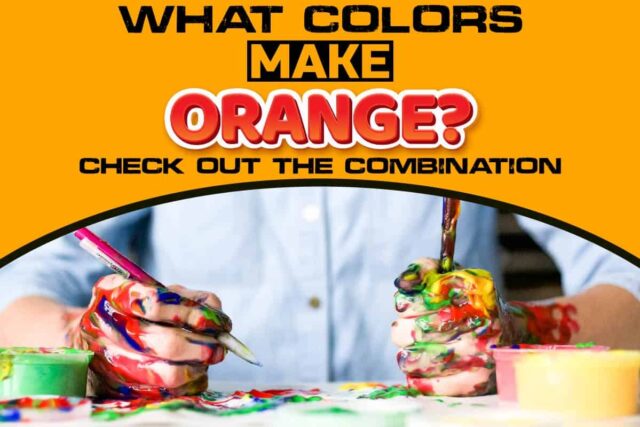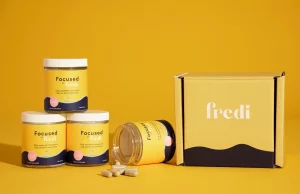The word orange describes two different things. ‘Orange’ – the fruit and ‘orange’ – the color! It is almost impossible to state one and not think of the other.
Anyway, let’s share some thoughts about the color. When you think of the color orange, what comes to mind? It definitely would be sunshine, laughter, life, freedom! This color comes with a beautiful feel or excitement.
Orange represents a whole lot of things essential to a beautiful life. And, it is pretty much an exciting color to have around.
So then, let’s dive right into the subject.
What colors make orange
Orange is obtained by combining two colors – yellow and red. A combination of these colors produces the actual orange color.
However, to get a lighter shade of orange, add a little more of the yellow color.
Interestingly, the orange color appears in other amazing shades. For example, Cadmium Yellow and Cadmium Red make a beautiful, robust orange color. You can also get a saturated orange color. Cadmium lemon mixed with cadmium red gives you a saturated orange.
A combination of yellow ocher and cadmium red creates a much more mute orange. So by just changing the shade of yellow, you can achieve other shades of orange.
Nevertheless, yellow and red is the base color needed to create any shade of orange color.
Continue reading for more information on this topic.
What Does Orange Mean
Orange is no doubt a cheerful and vibrant color. It could mean a whole lot of things. Traditionally, orange is said to mean happiness.
In a general term, orange means vitality, enthusiasm, and excitement. And it agrees with its traditional meaning.
The color is also said to be very friendly. And, you should try out an orange outfit if you plan to meet new people. The color orange tells a lot about how much you love to be around people. It also exposes how creative you are and shows that you’re a person of great interest.
Interestingly, this sunshine color is also appreciated across different countries and beliefs.
For example, in Paganism, Orange symbolizes energy, attraction, vitality, and stimulation. Also, orange represents good luck and prosperity in China and Japan, respectively.
In ancient China, however, orange was the color of transportation. They compared yellow and red to light and fire, spirituality and sensuality. According to them, the interaction between the two primary colors created the color of transformation – Orange.
Orange also has a significant meaning in our western culture. It is usually linked with thanksgiving and Halloween.
Orange is also recognized to mean joy, deliverance, and passionate praise in Christianity. Some also say it represents the fire of God. Also, the color, orange, is said to represent the sin of gluttony in Christianity.
Orange is also said to mean;
- Warmth
- Amusement
- Extroversion
- Fire
- Energy
- Activity
- Taste and aroma
- Danger
- Unconventional
How Did Orange Get Its Name
You might be curious about how the name orange came about. Since it shares the same name with the fruit, you may wonder which was named first. Let’s answer that question.
The color orange was named after the fruit orange. So, orange as a fruit came first. However, ancient people first used the name to describe the orange tree.
As the world evolved, it eventually came to mean the fruit and not just the orange tree. The word was adopted from the old french word – pomme d’orenge. Pomme d’orenge was adopted from the Arabic word naranj.
However, the word was first used as a color in the early 1500s. English speakers had no name for the color until the fruit became widely available. Before then, orange was called ‘yellow-red’ in old English.
Is Orange A Primary Or Secondary Color
The primary colors happen to be blue, red, and yellow. But purple, orange, and green are the secondary colors. Now, primary colors are also called basic colors. And, this is because they are not created by mixing different colors.
When colors are combined, another color is produced. So, when you mix two primary colors, you get a secondary color. For instance, Yellow + Blue = Green.
However, to get a good blend of secondary colors, the primary colors must be even. Furthermore, secondary colors are combined with primary to create tertiary colors. Examples of tertiary colors are; red-orange, yellow-orange, yellow-green, blue-green, blue-violet, and red-violet.
Spiritual And Religious Activities Associated With Orange
Orange is associated with lots of spiritual and religious activities. The orange fruit, most especially, is attached to several spiritual practices.
Interestingly, oranges have been worshiped and admired in the past. Magicians also use it to cast spells.
In ancient times, oranges were given as wedding gifts. According to an ancient legend, Mother earth presented an orange tree to Hera and Zeus as their wedding gift.
Also, there’s a belief attached to the orange plant. In those days, it was believed that an orange plant in a house brings blessings to the household.
Also, the orange plant was thought to protect the family from infertility.
Additionally, the color orange is believed to be an antidote for strengthening bonds. Most people believe that giving oranges to your loved one could strengthen your bond. There’s, however, another belief that using orange in bathing energizes the soul.
Orange is also the sacred color worn by Hindu swamis and Buddhist monks. The monks choose oranges because of the dye available in ancient times. To date, the orange role is the choice for Theravada Buddhists.
The orange color of the rope represents flame. Specifically, it refers to the flame from a burning fire. However, the robe symbolizes simplicity and detachment from materialism.
What Colors Fit Best With Orange
Orange is an amazing color. And it can blend so well with other colors. Finding colors that go with orange isn’t as difficult at all. The colors that fit best with orange are blue, burgundy, purple, brown, and mimosa.
However, many color variations suit orange perfectly. These colors, when combined with orange, will enable you to appreciate the awesomeness that the color has. Let’s see some of them.
Orange and white:
Well, white might not seem like a good fit for orange. Its extreme brightness may be thought to conflict with the orange color.
However, these two combinations are incredible. But, to get the best of the combination, try a darker shade of orange on white.
Orange and red:
Red and orange are color wheel neighbors. It means that both colors are found side by side on a color wheel.
Interestingly, these are both vibrant and bold colors. But they could have a gentle impact when combined. However, to get the best from this color blend, do not use them equally. For example, primary red would match perfectly with tawny-orange.
Orange and green:
Orange and green is a combination to die for. Mostly because of the natural feel it gives. If you’ve ever seen an orange tree in all its naturalness, you would consider the love this combination. There’s nothing more beautiful than nature. And that’s what this combination gives.
However, a darker shade of green will give you a better blend. For example, a darker green like emerald works best with blunt orange. Orange also goes perfectly with citrus green.
Orange and gray:
These two colors are amazing together. It could be because grey is very much close to purple and blue. These two colors have got a lot in common. They are both associated with helping a person deal with disappointment and frustration.
Both colors are creative and efficient. But, regardless of what makes these colors a perfect match, you should try it out.
What Is Color Wheel
The color wheel is a circle with different colored sectors. It is used to show the relationship between colors. Additionally, it helps us understand how different colors work together.
The traditional color wheel ‘RYB’ was created by Sir Isaac Newton. However, other color wheels have been created, like CMY and RGB. These recent color wheels can create a bigger range of colors.
However, RYB is still the best source for understanding color harmony. The wheel uses 12 main colors. And importantly, each color on the wheel has four qualities. Let’s look at them.
Hue:
Hue is the color position around the wheel. It is the brightest and purest version of each color.
Saturation:
Saturation is also known as intensity or chroma. Saturation tells you how vibrant the color is.
Value:
Value has to do with how dark or light a color is. It can also help you to darken or lighten a color.
For instance, you can create a shade of colors by adding black to your color. You can also tint color by adding white. Additionally, colors are toned by adding grey.
Temperature:
The Color wheel is divided into two parts. We have warm colors and cool colors. As you move the wheel around, Individual colors can change in temperature. For example, a warm red will include more yellow, and a cool red will include more value.
Conclusion
Orange is a secondary color. It is produced by adding two primary colors – red and yellow.
Interestingly, orange is an easy color to play around with. With just a little creative mind, you can combine the color with a variety of other colors. Additionally, orange colors also appear in several different shades.
Orange is a beautiful tool for creating amazing artwork. Surprisingly, the color is also appreciated across different countries and religions.














